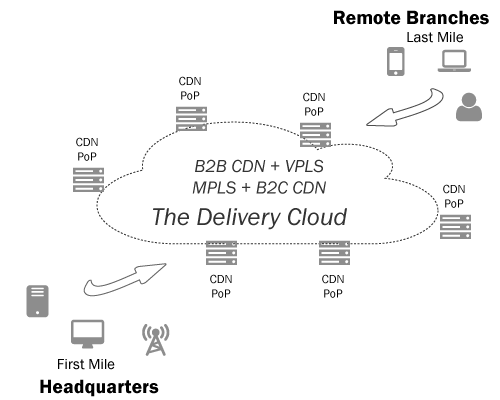Is the Hybrid WAN really the next big thing long term? Some industry pundits believe it is – calling it “Hybrid is the new WAN“. An entire ecosystem of startups has sprung up around the movement of the Hybrid WAN. It has so much traction that carriers are investing untold millions, and re-working existing architectures to support it. What happens if the industry is wrong about the potential of the Hybrid WAN and in 3 years it fizzles away. The biggest weakness in the Hybrid WAN is MPLS, which is really a legacy transport service hanging on by a thread in the world of cloud.
Is Hybrid WAN Dead on Arrival?
What is Hybrid WAN and why does it exist in the first place? In simple terms, Hybrid WAN is a solution of using software to configure and manage a multi-vendor WAN consisting of MPLS, Internet Ports, VPLS, etc., and hardware from the likes of Cisco, Juniper, Brocade or whomever, for the purposes of cost reduction, ease of use, scalability, and so on.
Now lets cut through the chase. The real reason Hybrid WAN exist today is not for cost reduction purposes, simplification, QoS or whatever; the real reason the Hybrid WAN exist today is for “Preservation“. Incumbents want to protect billions of dollars of existing market share, and the Hybrid WAN is the way to do it. The growing threat of open source software and the “dummy-fication” of pipes (transit) is a killer to traditional telecom business model, especially legacy transport services. And to make matters worse, GAFAN is doing all in its power to commoditize the software, hardware and transport service that supports the Internet and content delivery.
MPLS is the weakest link in the Hybrid WAN chain. Invented a decade and half ago, it has as much use today as Frame Relay, thus it has no place in the cloud economy. It is a “Limitation Architecture” not an “Enabling Architecture”. Is Hybrid WAN dead on arrival? No, it has one good use – to serve the retail sector where stores like Wal Mart can conduct their credit card transactions and send back the data to the mother ship.
Content Delivery Cloud

There is one transport service that is a cloud enabler, and that is the Internet Port, also known as Direct Internet Access to some. Its cheap, simple to set up, and comes in two flavors – FastE and GigE. The best part – in the WAN setting remote branches and offices (end points) can run free open source software for routing + firewall via a VM on commodity hardware. As far as the pipe is concerned, its gets demoted to a dummy pipe with no intelligence. The routing intelligence and security of the packets is done by the private B2B CDN service, whomever that should be, which scales on demand and is offered on a pay-as-you-go basis.

